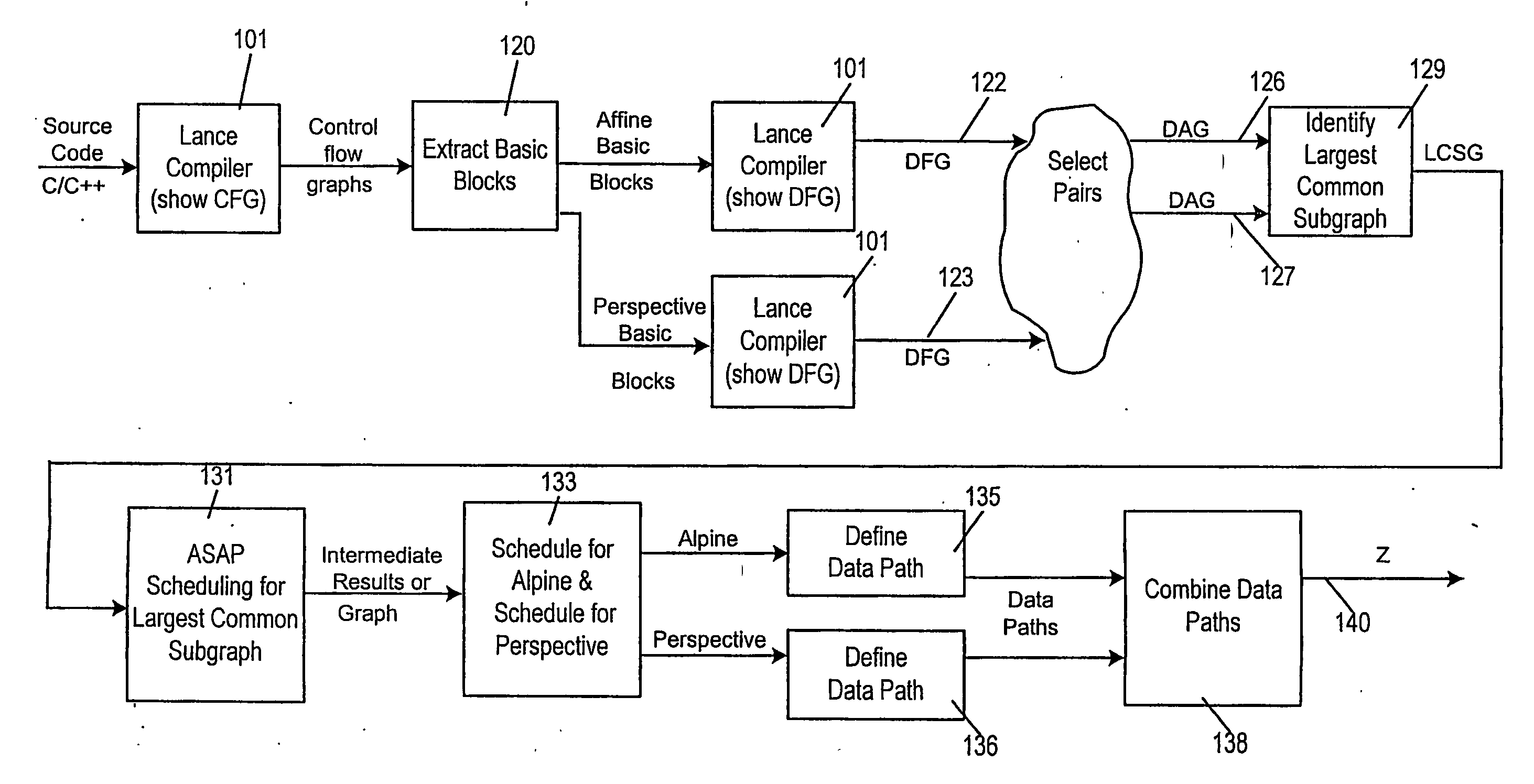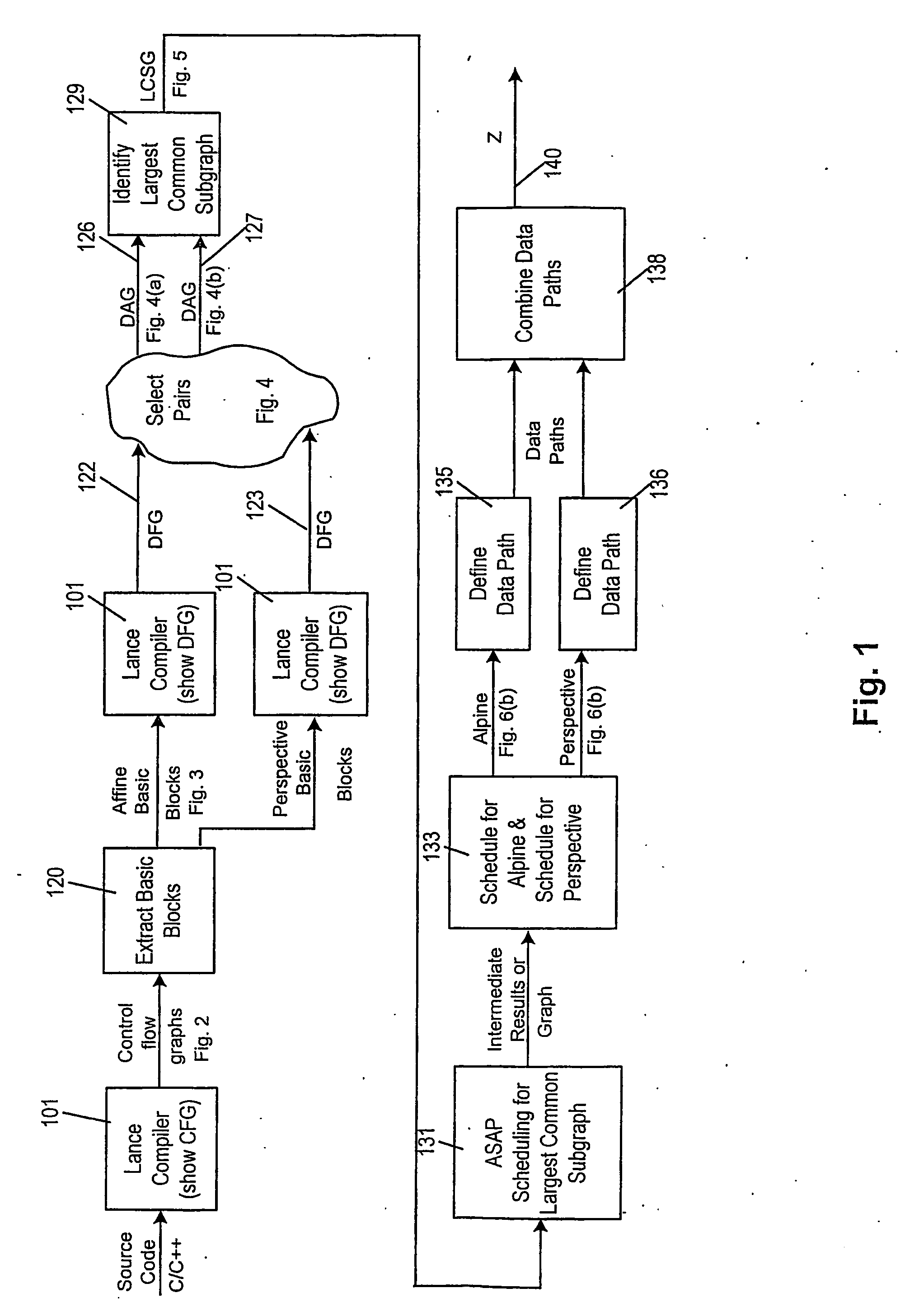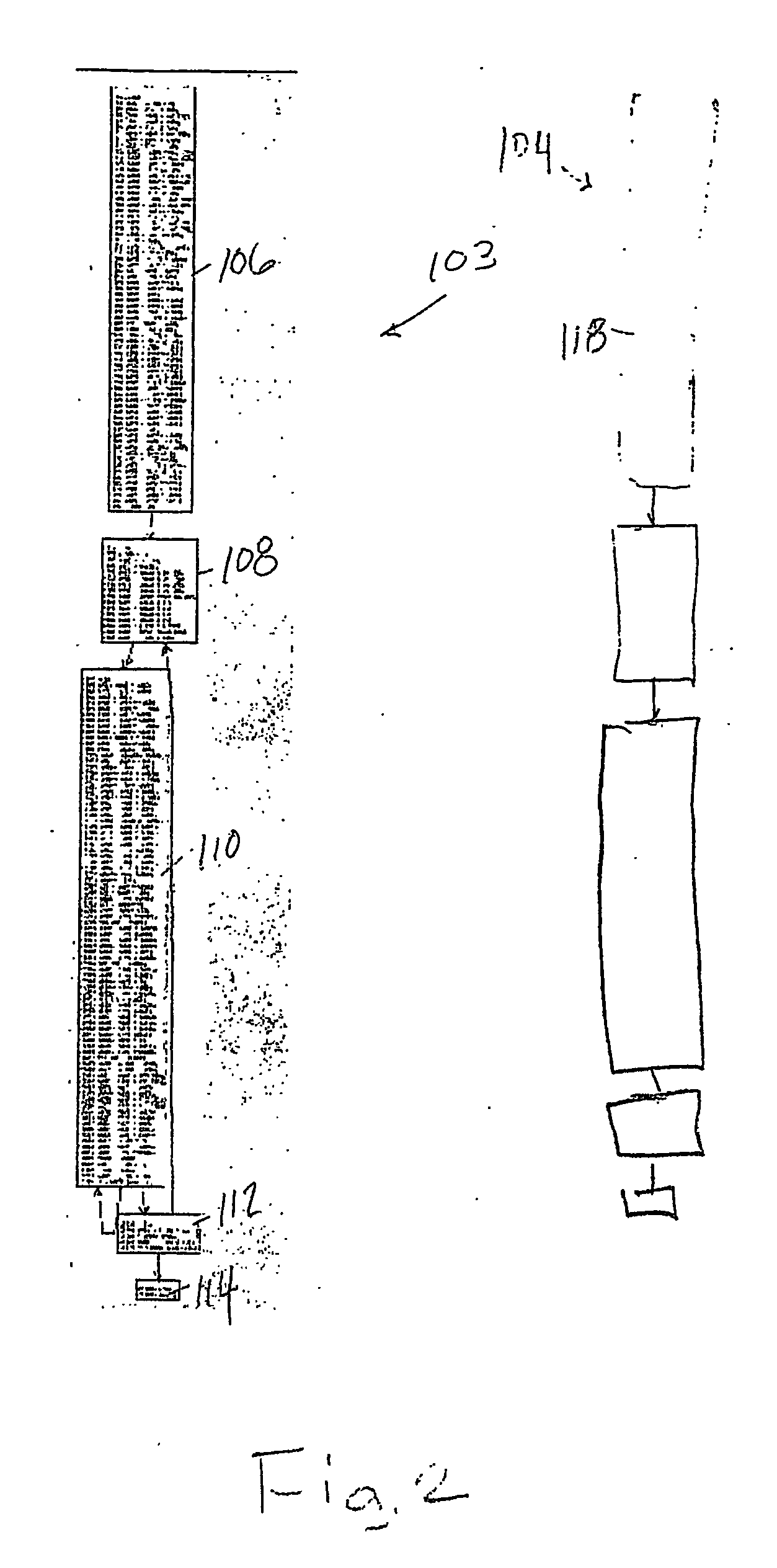Reconfigurable processing
a reconfigurable processing and processing technology, applied in the field of reconfigurable processing, can solve the problems of poor hardware reutilization for other applications, poor on-chip network architecture, computational intensive multi-media and graphics applications, etc., and achieve the effects of reducing the total area, reducing the length of the wire, and reducing the delay of the signal
- Summary
- Abstract
- Description
- Claims
- Application Information
AI Technical Summary
Benefits of technology
Problems solved by technology
Method used
Image
Examples
case 1
ry loops with unknown execution time. Here, the problem is the execution time of the process is known only after it has finished executing in the processor. So static scheduling is not possible.
[0327] Solution: (Assumption) Once a unit generates an output, this data is stored at the consuming / target unit's input buffer. Referring to the scheduled chart of FIG. 24X, each row represents processes scheduled on a unique type of unit (Processing Element). Let P1 be the loopy process.
[0328] From FIG. 24X we see that
[0329] P3 depends on P1 and P4,
[0330] P2 depends on P1,
[0331] P6 depends on P2 and P5.
[0332] If P1's lifetime exceeds the assumed lifetime (most probable lifetime or a unit iteration), then all dependents of P1 and their dependents (both resource and data) should be notified and the respective Network Schedule Manager (NSM) and Logic Schedule Manager (LSM), of FIG. 27X, should be delayed. Of course, this implies that while preparing the schedule tables, 2 assumptions are m...
case 2
ination of two loops with one loop feeding data to the other in an iterative manner.
[0338] Solution: Consider a processing element, PA, feeding data to a processing element, PB, in such a manner. For doing static scheduling, if one loop unrolls them and treats it in a manner of smaller individual processes, then it is not possible to assume an unpredictable number of iterations. Therefore if an unpredictable number of iterations is assumed in both loops, then the memory foot-print could become a serious issue. But an exception can be made. If both loops at all times run for the same number of iterations, then the schedule table must initially assume either the most probable number of iterations or one iteration each and schedule PA,PB,PA,PB and so on in a particular column. In case the prediction is exceeded or fallen short off, then the NSM and LSMs must do 2 tasks:
[0339] 1) If the iterations exceed expectations, then all further dependent processes (data and resource) must be not...
case 3
in the macro level i.e. containing more than a single process.
[0342] Solution: In this case, there are some control nodes inside a loop. Hence the execution time of the loop changes with each iteration. This is a much more complicated case than the previous options. Here lets consider a situation where there is a loop covering two mutually exclusive paths, each path consisting of two processes (A,B and C,D) with (3,7 and 15,5) cycle times. In the schedule table there will be a column to indicate an entry into the loop and two columns to indicate the paths inside the loop. Optimality in scheduling inside the loop can be achieved, but in the global scheme of scheduling, the solution is non-optimal. But this cannot be helped because to obtain a globally optimal solution, all possible paths have to be unrolled and statically scheduled. This results in a table explosion and is not feasible in situations where infinite number of entries in table are not possible. Hence, from a global view...
PUM
 Login to View More
Login to View More Abstract
Description
Claims
Application Information
 Login to View More
Login to View More - R&D
- Intellectual Property
- Life Sciences
- Materials
- Tech Scout
- Unparalleled Data Quality
- Higher Quality Content
- 60% Fewer Hallucinations
Browse by: Latest US Patents, China's latest patents, Technical Efficacy Thesaurus, Application Domain, Technology Topic, Popular Technical Reports.
© 2025 PatSnap. All rights reserved.Legal|Privacy policy|Modern Slavery Act Transparency Statement|Sitemap|About US| Contact US: help@patsnap.com



